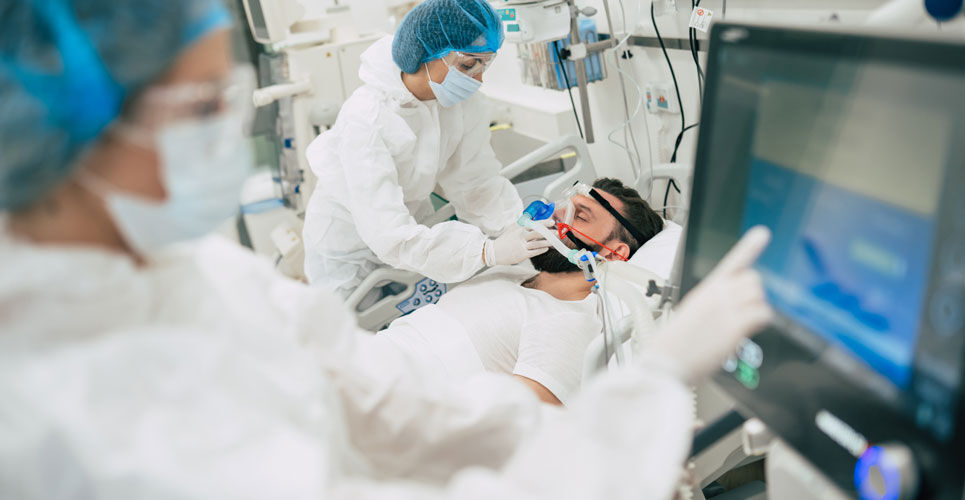Though prone positioning reduces the risk of respiratory failure, it appears to be of limited benefit for non-critically ill patients with COVID-19
The use of prone positioning (PP) for non-critically ill hospitalised patients with COVID-19 is of limited benefit according to the results of a large, pragmatic trial by researchers from the Division of General Internal Medicine, Sinai Health, Toronto, Canada.
PP requires that a patient lies face down onto their chest and abdomen to take advantage of physiologic changes that can result in improved oxygenation through decreased ventilation/perfusion mismatch. COVID-19 commonly results in pneumonia which is the most common reason for admission to hospital and can lead to acute hypoxic respiratory failure necessitating supplemental oxygen therapy or respiratory support with mechanical ventilation. Acute respiratory distress syndrome (ARDS) can be caused by severe pneumonia due to COVID-19 and, in such patients, there is a strong recommendation to use PP for more than 12 hours per day. Moreover, there is some data from a meta-trial suggesting that awake prone positioning of patients with hypoxaemic respiratory failure due to COVID-19, reduces the incidence of treatment failure and the need for intubation without any evidence of harm. This led the authors of the meta-trial to concluded that their results support the routine use of awake prone positioning of patients with COVID-19 who require support with high-flow nasal cannula. However, whether this approach would help less severely ill patients, i.e., lead to a reduced risk of death or respiratory failure, remains to be determined and was the subject of the present study by the Canadian team.
The team recruited patients hospitalised with COVID-19 and who required supplemental oxygen and were independently able to adopt PP. Patients were randomised 1:1 to either proning or usual standard of care, i.e., where there was no instruction to adopt a prone position. All participants were then followed until discharge from hospital or death or for 30 days. Among those randomised to PP, it was recommended that this position was adopted four times a day (2 hours per session) and participants were also asked to sleep overnight in this position. The primary outcome was a composite of in-hospital death, mechanical ventilation or worsening respiratory failure which was defined as the need for at least 60% fraction of inspired oxygen for more than 24 hours.
Prone positioning and outcomes

A total of 248 individuals with a median age of 56 years (36% female) were included in the analysis. Overall comorbidities were hypertension (40%), diabetes (27%) and COPD or asthma (11%). The median time spent in PP during the first 72 hours was 6 hours and 0 hours in the control group.
The median time until the primary outcome was one day and occurred in 14% of those assigned to either group (odds ratio, OR = 0.92, 95% CI 0.44 – 1.92). There were also no differences in subgroup analyses based on age, or when stratified by baseline hypoxia.
The authors concluded that the use of PP among hypoxic patients with COVID-19 did not improve clinical outcomes. However, they added that the wide confidence intervals precluded definitely ruling out benefit or harm.
Citation
Fralick M et al. Prone positioning of patients with moderate hypoxaemia due to covid-19: multicentre pragmatic randomised trial (COVID-PRONE) BMJ 2022

